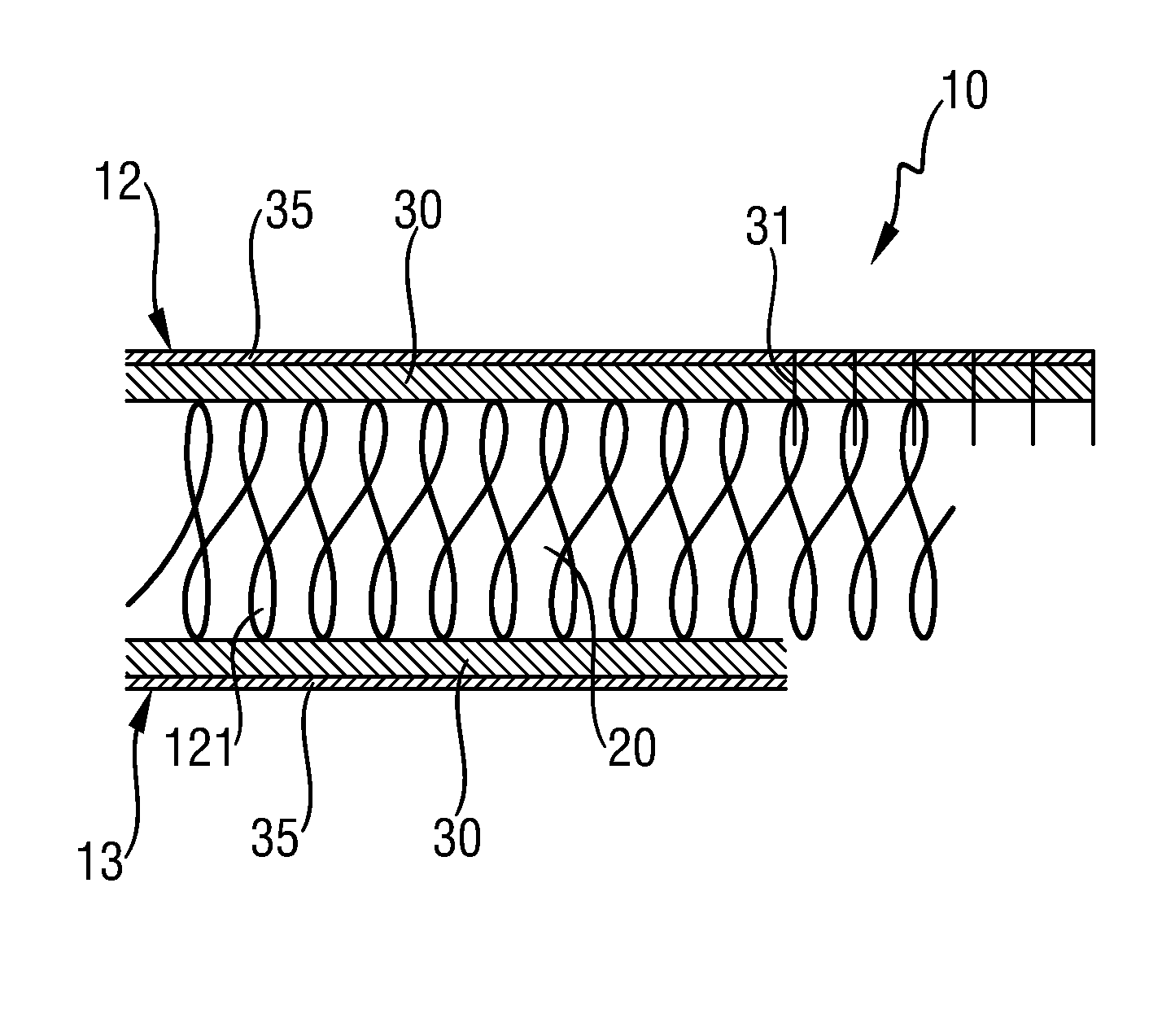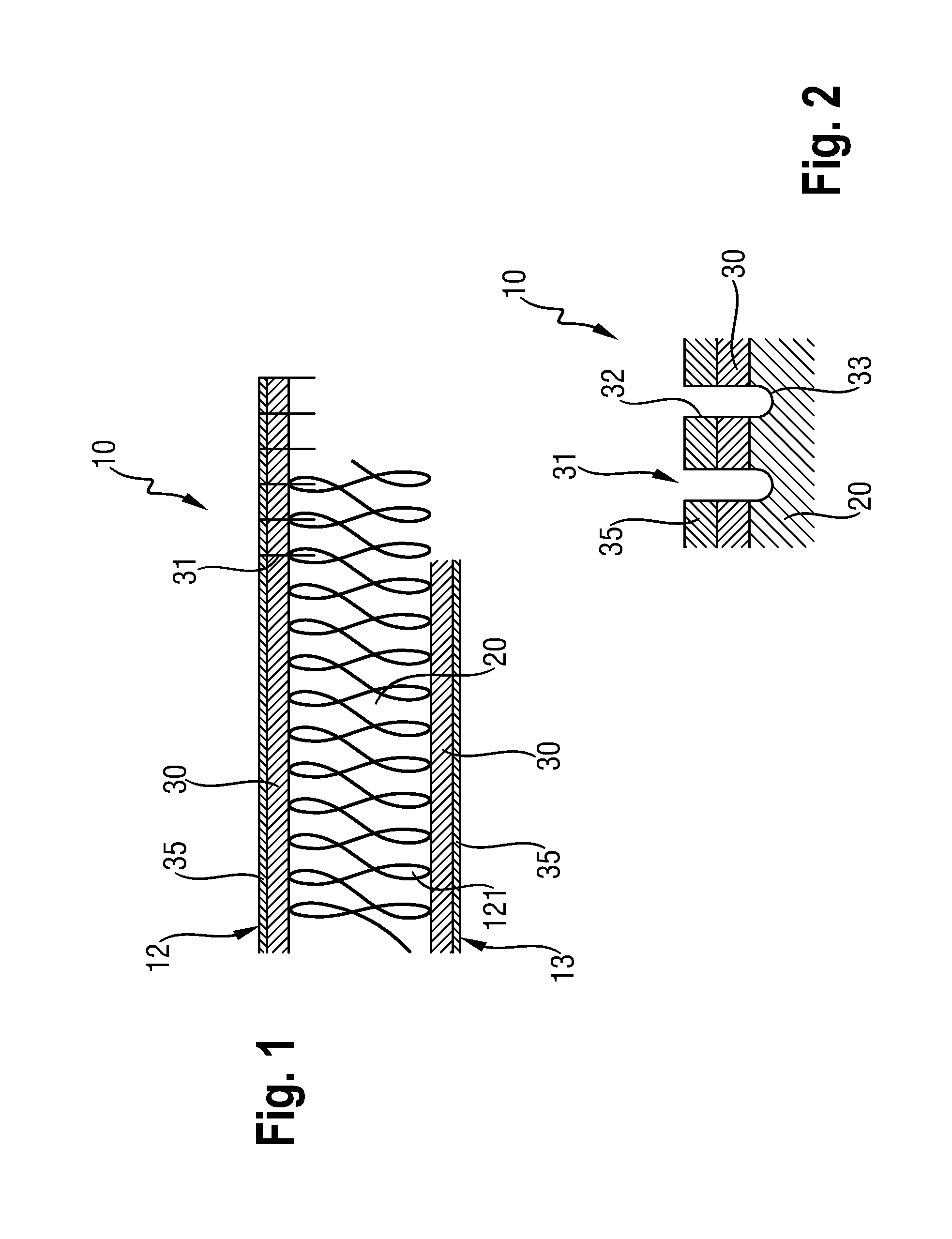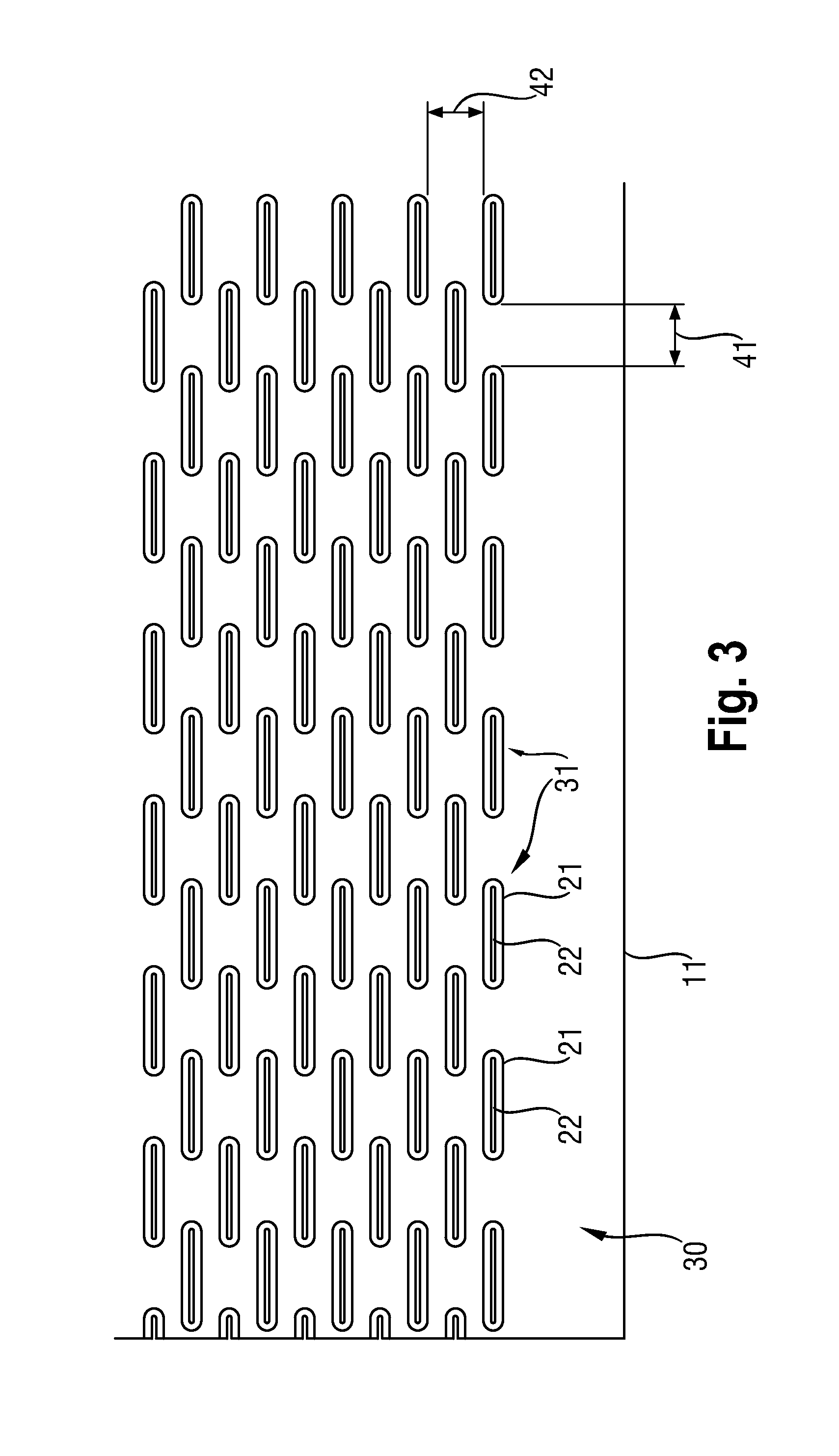Method for producing a double-layer or triple-layer sound-absorbing panel and corresponding sound-absorbing panel
a sound-absorbing panel and triple-layer technology, applied in the direction of sound-absorbing devices, building components, applications, etc., can solve the problems of reducing the maximum surface area of the sound-absorbing panel, the grooves negatively affecting the smooth connection of the coating to the support panel, so as to achieve a greater sound-absorbing acoustic panel, the production process may be simplified, and the effect of reducing the density of the chip
- Summary
- Abstract
- Description
- Claims
- Application Information
AI Technical Summary
Benefits of technology
Problems solved by technology
Method used
Image
Examples
Embodiment Construction
[0008]Proceeding from this prior art, the object of the invention is to specify a method by which a sound-absorbing acoustic panel may be constructed so as to be less costly in terms of treatment. It is, therefore, an object of the invention to produce such a panel in an efficient and cost-effective manner.
[0009]This object is achieved according to the invention by a method having the features of Claim 1.
[0010]A method for producing a double-layer or triple-layer sound-absorbing panel is specified, therefore, said panel consisting of a support panel and at least one cover panel or coating of the support panel, the cover panel or coating being fixedly connected to the support panel. In this case, preferably an open-pore support panel is provided as the support panel and the sound-absorbing panel is arranged on each side, provided with a cover panel or coating, with a device opposite said side emitting a laser beam, the upper face of said panel being subjected to the laser beam, which...
PUM
| Property | Measurement | Unit |
|---|---|---|
| diameter | aaaaa | aaaaa |
| width | aaaaa | aaaaa |
| width | aaaaa | aaaaa |
Abstract
Description
Claims
Application Information
 Login to View More
Login to View More - R&D
- Intellectual Property
- Life Sciences
- Materials
- Tech Scout
- Unparalleled Data Quality
- Higher Quality Content
- 60% Fewer Hallucinations
Browse by: Latest US Patents, China's latest patents, Technical Efficacy Thesaurus, Application Domain, Technology Topic, Popular Technical Reports.
© 2025 PatSnap. All rights reserved.Legal|Privacy policy|Modern Slavery Act Transparency Statement|Sitemap|About US| Contact US: help@patsnap.com



